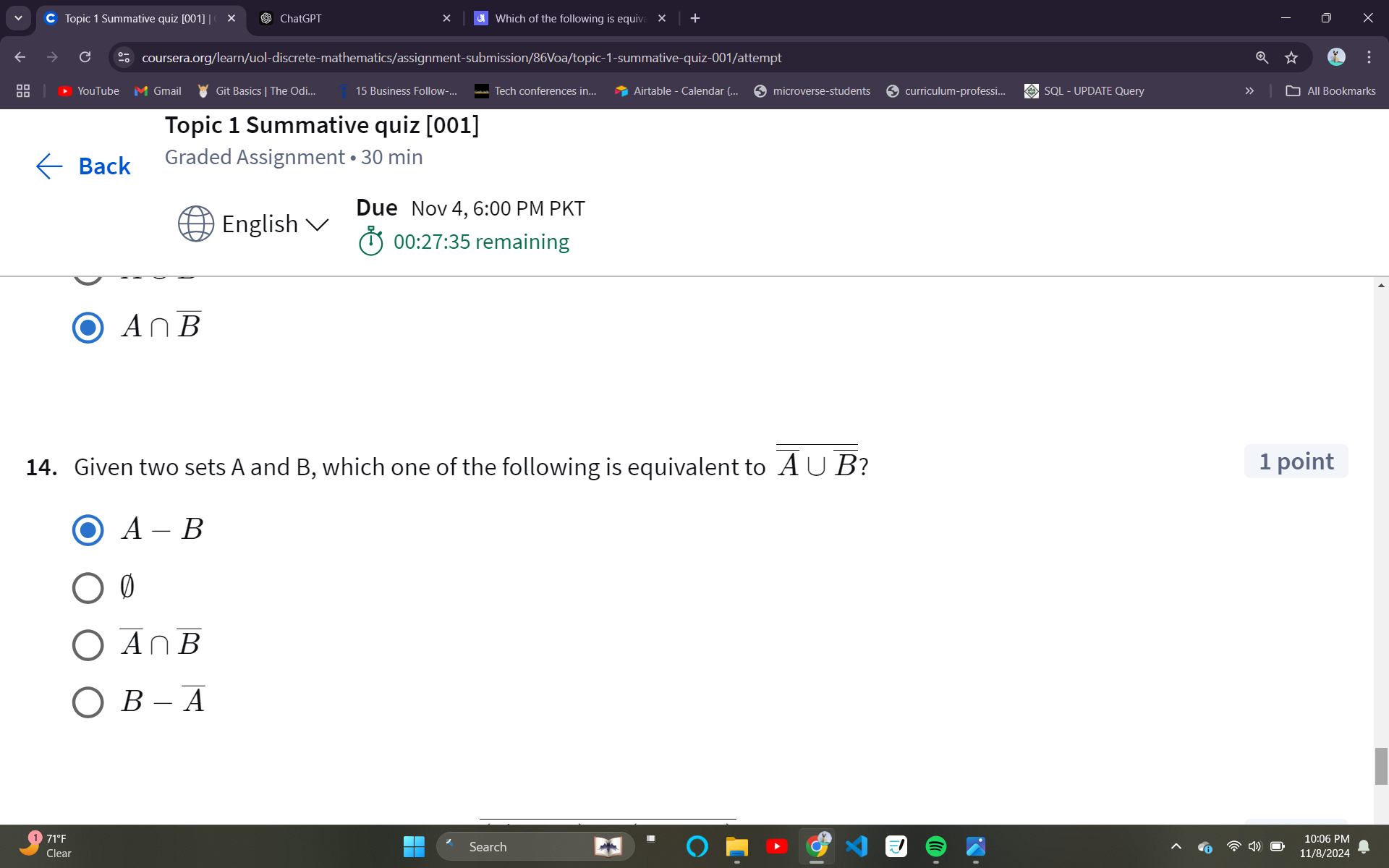Given two sets A and B, which one of the following is equivalent to A complement union B complement?

Understand the Problem
The question is asking which of the provided options is equivalent to the union of the complements of two sets A and B. This involves understanding set theory concepts, particularly how to manipulate complements and unions of sets.
Answer
The correct answer is $A^c \cap B^c$.
Answer for screen readers
The correct answer is $A^c \cap B^c$.
Steps to Solve
-
Understand the Complement Operation The complement of a set $A$, denoted $A^c$, includes all elements not in $A$. Therefore, if we start with the expression $A^c \cup B^c$, we need to find what this means in terms of A and B.
-
Apply De Morgan's Laws According to De Morgan's laws, the union of the complements can be expressed as the complement of the intersection: $$ A^c \cup B^c = (A \cap B)^c $$
-
Analyzing Set Operations We need to find an equivalent expression among the options given. Let's derive expressions based on $(A \cap B)^c$:
- This consists of everything outside both A and B, including elements not in A or not in B.
-
Evaluate the Given Options
- $A - B$: Elements in A that are not in B.
- $\emptyset$: The empty set, which doesn't represent our derived expression.
- $A^c \cap B^c$: Elements that are outside both A and B, which is consistent with $(A \cap B)^c$.
- $B - A$: Elements in B that are not in A.
-
Identify the Correct Answer From our analysis, the correct representation of $A^c \cup B^c$ is given by $A^c \cap B^c$.
The correct answer is $A^c \cap B^c$.
More Information
This question utilizes the principles of set theory, particularly De Morgan's Laws, which state how to transition between unions of complements and intersections of the original sets.
Tips
- Misinterpreting Complements: Not distinguishing between complements and the original sets can lead to incorrect answers.
- Forgetting De Morgan's Laws: Ignoring or forgetting to apply these laws often results in confusing the relationships between sets.
AI-generated content may contain errors. Please verify critical information